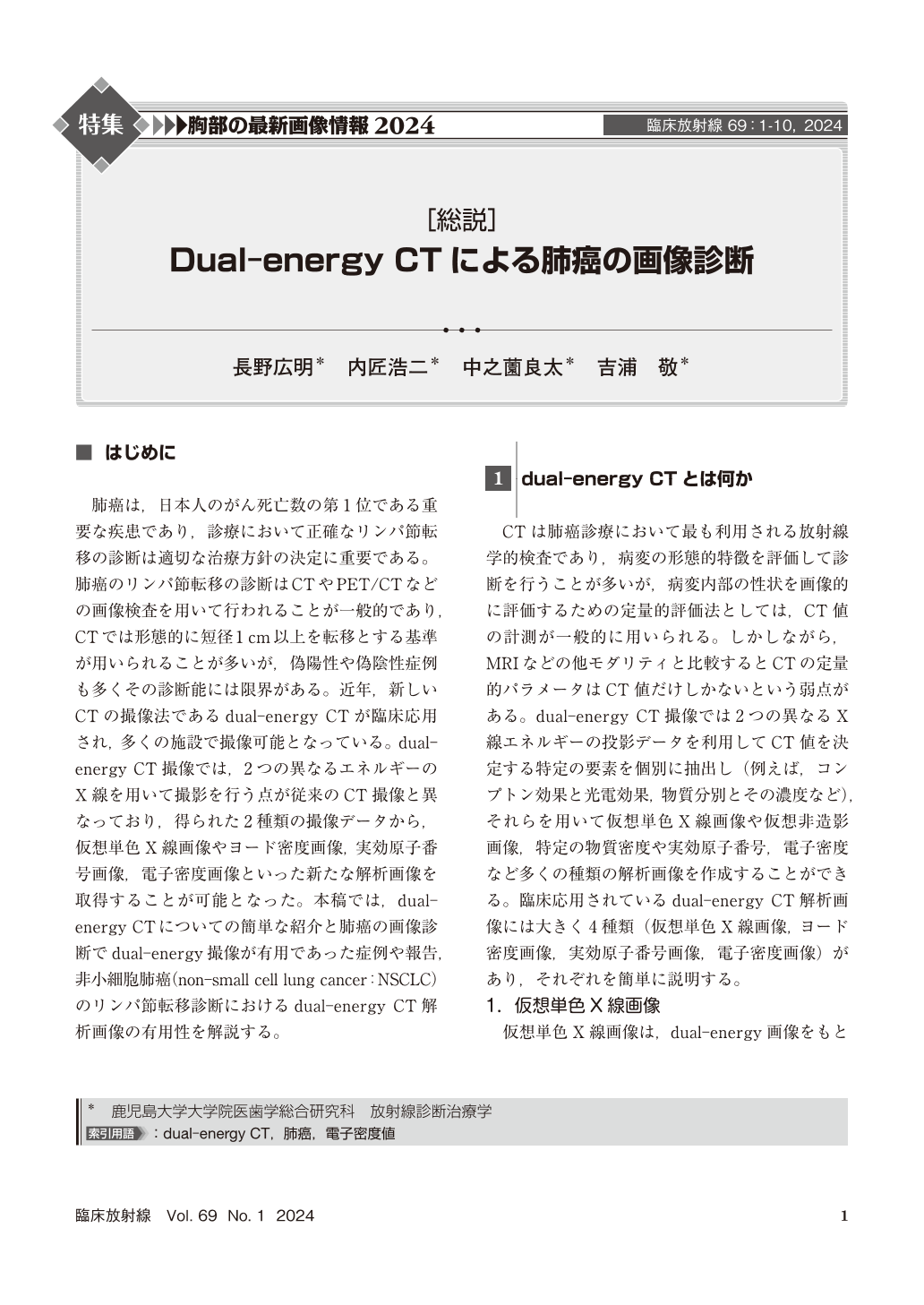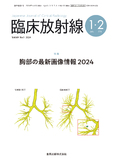Japanese
English
- 有料閲覧
- Abstract 文献概要
- 1ページ目 Look Inside
- 参考文献 Reference
肺癌は,日本人のがん死亡数の第1位である重要な疾患であり,診療において正確なリンパ節転移の診断は適切な治療方針の決定に重要である。肺癌のリンパ節転移の診断はCTやPET/CTなどの画像検査を用いて行われることが一般的であり,CTでは形態的に短径1cm以上を転移とする基準が用いられることが多いが,偽陽性や偽陰性症例も多くその診断能には限界がある。近年,新しいCTの撮像法であるdual-energy CTが臨床応用され,多くの施設で撮像可能となっている。dual-energy CT撮像では,2つの異なるエネルギーのX線を用いて撮影を行う点が従来のCT撮像と異なっており,得られた2種類の撮像データから,仮想単色X線画像やヨード密度画像,実効原子番号画像,電子密度画像といった新たな解析画像を取得することが可能となった。本稿では,dual-energy CTについての簡単な紹介と肺癌の画像診断でdual-energy撮像が有用であった症例や報告,非小細胞肺癌(non-small cell lung cancer:NSCLC)のリンパ節転移診断におけるdual-energy CT解析画像の有用性を解説する。
Mediastinal involvement in lung cancer is an important prognostic factor, and accurate nodal staging is essential to choose adequate treatment strategy. Dual-energy CT(DECT)has introduced novel applications, such as virtual monochromatic imaging, iodine concentration(IC)mapping, effective atomic number mapping and electron density(ED)mapping, into clinical practice. Previous reports on DECT in the diagnosis of lymph node metastases have showed the usefulness of IC, which can better quantify the contrast effect in the lymph nodes, and ED, which are considered to reflect the molecular structure of the lesion tissue. In this review, clinical applications of DECT in lung cancer are discussed presenting illustrative cases.

Copyright © 2024, KANEHARA SHUPPAN Co.LTD. All rights reserved.


